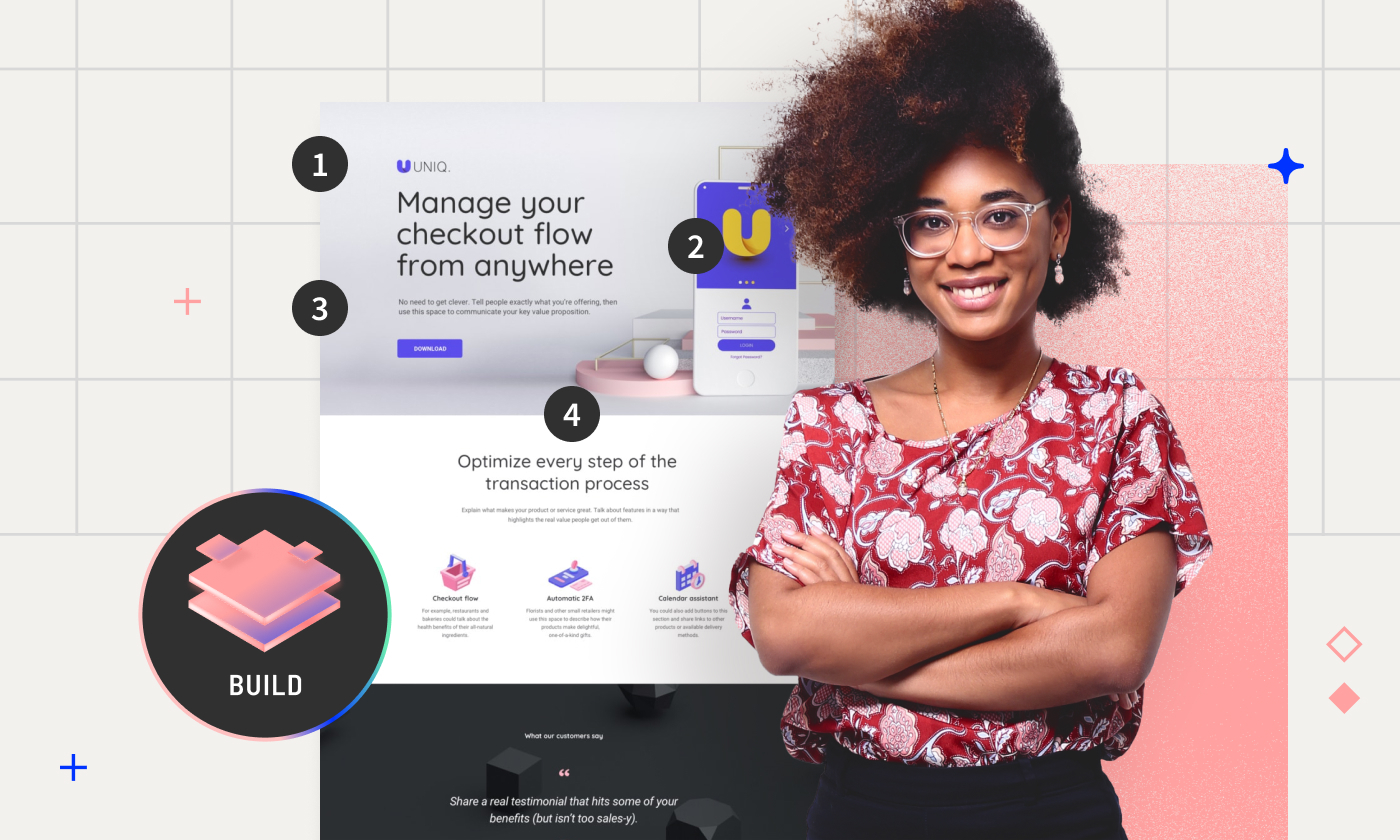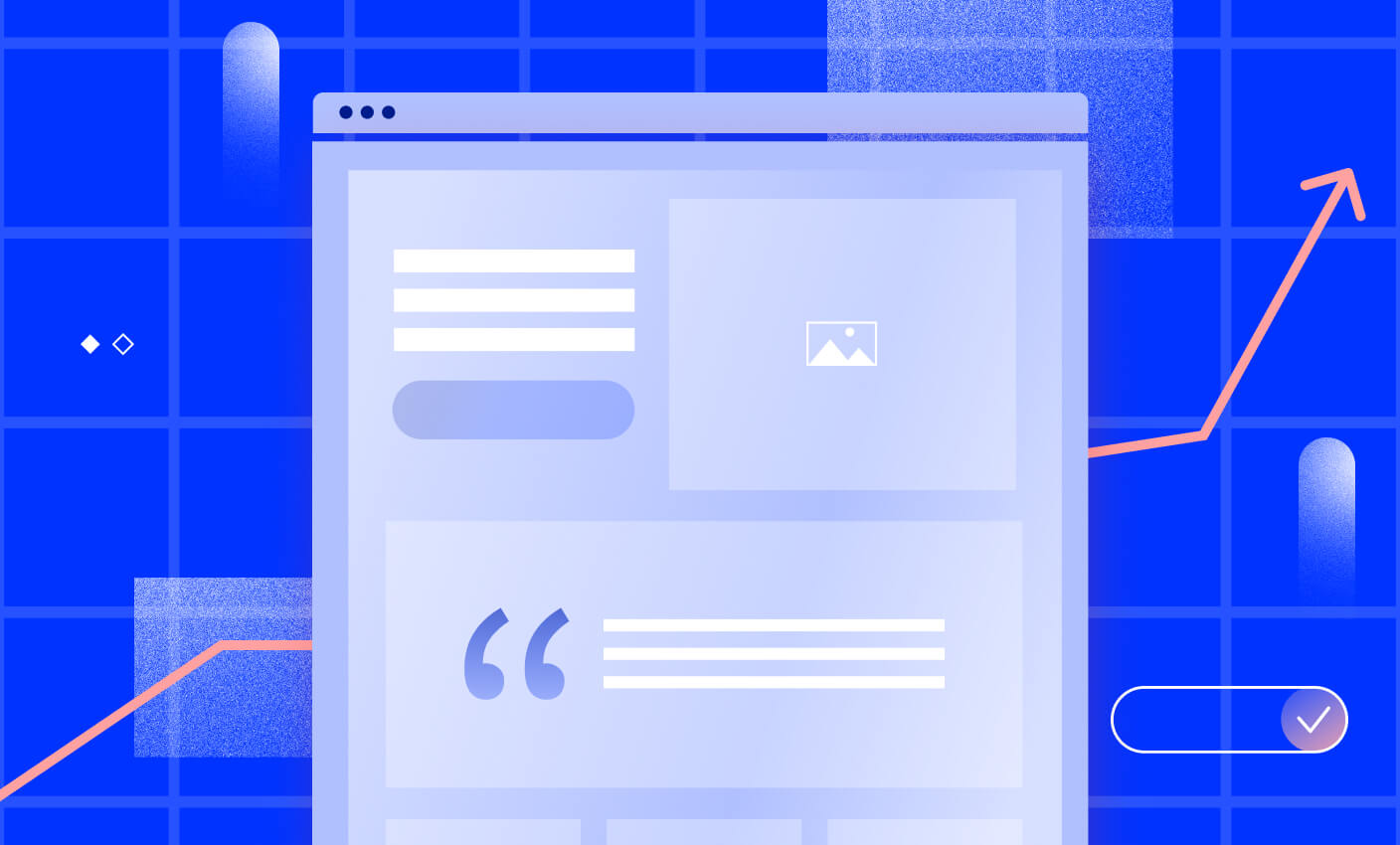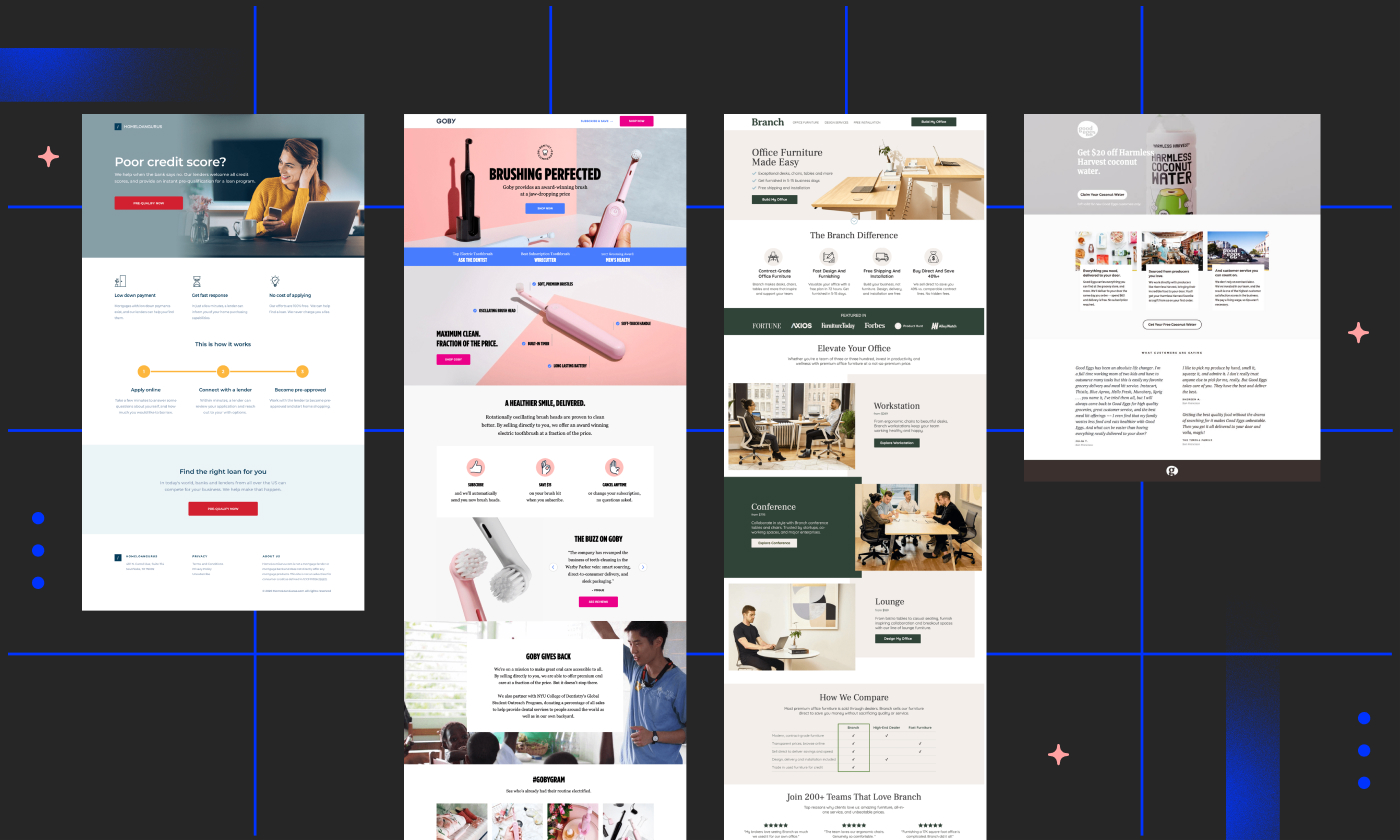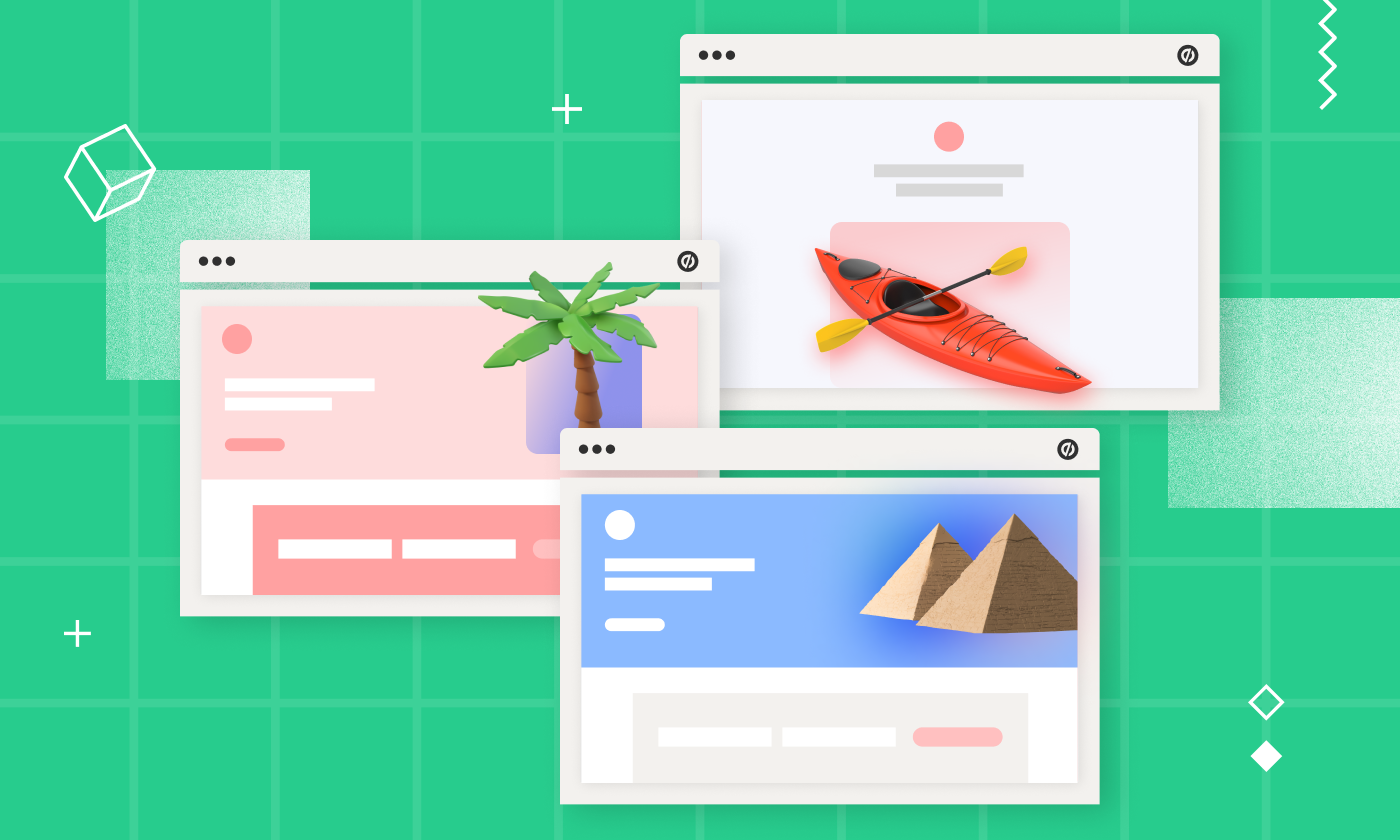Josh Gallant
Josh is the founder of Backstage SEO, an organic growth firm that helps SaaS companies capture demand. He’s a self-proclaimed spreadsheet nerd by day, volunteer soccer coach on weekends, and wannabe fantasy football expert every fall.
» More blog posts by Josh Gallant
Oli Gardner
Unbounce co-founder Oli Gardner has seen more landing pages than anyone on the planet. He’s obsessed with identifying and reversing bad marketing practices, and his disdain for marketers who send campaign traffic to their homepage is legendary, resulting in landing page rants that can peel paint off an unpainted wall. A prolific international keynote speaker, Oli is on a mission to rid the world of marketing mediocrity by using data-informed copywriting, design, interaction, and psychology to create a more delightful experience for marketers and customers alike. He was recently named the “The 2018 Marketer to Watch,” in the under 46 category, by his mother.
» More blog posts by Oli Gardner
What is a landing page and how do they work?
First, let’s get some quick definitions out of the way:
Landing pages are specific web pages that potential customers arrive at after expressing interest in a form of advertising.
Those advertising types include (but aren’t limited to):
- A search engine result
- A banner ad
- A Google ad
- A link in an email
- Print advertising
- TV commercials
The purpose of a landing page is to expand on the message of the advertisement or link and convince the visitor to “convert” into becoming a customer by taking a specific action.
How the page achieves this depends on the campaign’s goals and the type of landing page used.
Broadly, there are three main categories of landing pages:
- Standalone landing pages: These include click-through pages, lead capture pages (lead gen or squeeze pages), infomercial pages, and viral landing pages.
- Microsites: A small multi-page website (or sitelet) usually created to supplement the main website.
- Internal website landing pages: Homepages and product detail pages are often the bread and butter pages that make up your website.
13 types of landing pages you need to know
Let’s take a closer look at some of the types of landing pages you can build. For most of these examples, we use templates you can customize in the Unbounce landing page builder.
1. Click-through landing pages
Click-through landing pages are incredibly simple and among the most common types of landing pages.
The sole purpose of these pages is to provide the necessary details about an offer, explaining the benefits and context of use in such a way as to convince a user (or prospect) to progress to the point of conversion.
These pages are all about warming visitors up—getting them used to your offer and moving them to a higher-converting page.
In other words, all you can do is read about the offer and click through to a page where you can complete the transaction.
Source: Unbounce’s own A/B testing click-through page
Tips and insights
Because these landing pages are so focused on a single goal, focus on elements that will guide users to that final click:
- Make it easy for users to take the next step.
- Call out the offer above the fold.
- Use bullet points to explain the benefits.
- Create a strong call to action.
2. Lead capture landing pages
Sometimes referred to as “squeeze” pages, lead capture landing pages gather personal data from visitors, usually beginning with their name and email address.
These pages are often used to build email lists of relevant potential customers. This list will then be used to market to these people in the future.
A true squeeze page has absolutely no exit path from the page, no links or navigation—just a button to submit your details.
An incentive is typically offered in exchange for this personal data.
Source: Unbounce lead capture template
Tips and insights
On lead capture landing pages, get straight to the point with a prominent headline and imagery before diving right into the benefits you want to highlight.
When building a lead capture landing page, remember:
- Minimize navigation items.
- Establish clear expectations.
- Keep lead capture forms short and sweet.
For a deeper dive on lead capture landing pages in particular, bookmark our complete guide on how to build a successful lead capture page.
3. Long-form sales landing pages
As the name implies, these landing pages are long, and for good reason: they’re going in-depth on a product, service, or offer to make a case and encourage a conversion.
While most landing pages try to keep things short and sweet, these long-form pages use their length to their advantage. They dig into the information around a product or service to make a comprehensive use case and persuade users to convert.
These pages are more common in the B2B SaaS space or highly complex and technical industries. These pages understand that these users may need more education on a topic and more of a need to establish trust.
Alongside the usual elements in a landing page, these pages will often feature:
- Extensive social proof from existing customers.
- Detailed FAQs to address common questions or concerns.
- Video elements to expand on the information on-page.
Source: Unbounce Curio template
Tips and insights
When building long-form sales landing pages, it’s important to keep in mind that they walk a fine line. As lengthy as these pages get, they still need punchy, efficient copywriting and careful attention to the length of each section.
- Focus on a single value proposition and build the page around it.
- Social proof can include customer testimonials, reviews from third-party rating sites, and even case studies.
- You’ll need CTAs throughout a long-form sales LP—or a sticky bar that stays with the user as they scroll.
If you’re building out long-form sales landing pages and want to dig deeper, take a look at our guide on high-converting sales pages—with granular tips and examples to help you get started.
4. Brand awareness landing pages
Imagine finding a webpage that’s so captivating—so share-worthy—that you can’t help but send it to your friends, family, and anyone else who might find it intriguing. That’s the essence of a brand awareness landing page, sometimes called a viral landing page.
Why would you want to go viral with a landing page, though?
The big play here is brand awareness. These pages make a splash with what they have to say, offer, or in how they delight an audience. But they get shared by the visitors who see them, effectively relying on word-of-mouth to maximize reach.
What these pages look like will vary wildly, depending on the chosen angle and tactics to encourage word-of-mouth growth and (hopefully) viral sharing.
It’s important to remember that these pages don’t rely on luck, though. They’re a mix of careful planning, creativity, and a deep understanding of your audience—not to mention great timing.
Because these pages are trying to spread like wildfire, they’ll usually focus on using two key elements:
- Great content: No matter how hard you try, your work will never go viral if it’s lame. You can take steps to enable the viral process, but at the end of the day, your page has to be cool and relevant to stand a chance.
- Sharing enablers: You can boost your chances of success by including simple social media tools. This has the dual benefit of making it simple to share and increasing the perceived cachet of the person sharing it—particularly if they are among the first to do so.
Tips and insights
When building share-worthy brand awareness pages, keep these tips in mind:
- Spark conversation and engagement by encouraging interaction with your audience. Consider incentivizing shares and engagement.
- Whether it’s a video, article, or image you want to share, make sure you’re promoting something incredible.
- Understand your audience—leverage existing audience data to zero in on what’s going to be effective.
5. Microsites
A microsite is a small yet complete supplementary website used for fairly large campaigns. It normally has its own distinct URL related to the timing and relevance of the campaign.
Even though they’re a bit more than a single page, these are still classified as landing pages because they are destinations your customers are driven to from various marketing channels.
There are plenty of use cases and industries where these types of pages are common:
- Auto industry: Microsites are used fairly frequently in the car sales space, as they allow users to explore all the benefits of a popular make or model. You might also see them in co-branded settings with local car dealerships.
- Real estate: The same goes for real estate, where microsites are used for regional branches of national organizations, specific neighborhoods or new developments—even individual properties in some cases.
- B2B SaaS: We also see microsites used in the software industry, often as a way to create functional demo spaces or free resources that are more advanced than a simple PDF download. The HubSpot Website Grader is one of the more successful examples of this practice.
Alternatively, you might see these sorts of sites pop up to promote the latest blockbuster movies, featuring trailers, links to book tickets at a local cinema, and other promo information in a single, contained site.
Tips and insights
No matter the industry you serve, there are a few things to keep in mind when developing microsites:
- Don’t forget to focus on keywords—these sites are standalone and still rely on good keyword research. Keep the list of keywords you optimize for short and sweet.
- Simplify your URL and remove unnecessary details.
- Avoid mixing traffic from your main site and microsite for clean data and a consistent experience.
6. Product landing page
Product landing pages (or product detail pages) are incredibly common across multiple industries and can be thought of as extensions of the product info pages on a full website.
These pages let you explore a product’s features and benefits more thoroughly, incorporating additional information that may be useful for making a sale but could seem out of place on your existing website.
The immediate benefit of this page is that you’ve already got a wealth of content to repurpose and spin into its own independent landing page.
This means leaning into a bold, problem-focused headline, higher-quality imagery (and even videos) of the product in question, and plenty of supporting content in the form of social proof, reviews, pricing, and a strong CTA.
Tips and insights
Building a product landing page? Keep these tips in mind:
- Go beyond the benefits of your product and share the value they will give your customers—your product saves time, but your customers can use that time to take a vacation, focus on their business, and more.
- User-generated content, in the form of reviews, can make a big difference. This sort of social proof speaks more than solicited testimonials, especially if you highlight reviews hosted on a third-party platform.
- Cut the navigation elements and ignore how your product fits in with other products and services—sell one product at a time on these pages!
Product pages can be tricky to get right, so we published a complete guide on how to build winning product pages, including a handful of examples to learn from.
7. Homepage
So, we’ll start this one with a word of warning: We don’t always recommend using your existing homepage as a landing page for your marketing efforts.
With that being said if you’re not in a position to make standalone landing pages…
…you can rework your homepage to serve, in a pinch.
You’re always going to be better off driving users to a bespoke page with a single CTA and outcome, and most website homepages are trying to accomplish multiple goals at once. If your goal is to increase awareness of your business, you can drive traffic to your homepage.
Tips and insights
If you do plan on using your homepage as a landing page, remember:
- Rework your homepage to focus on a single goal to enhance your conversion rate.
- Remove unnecessary distractions.
- Match your homepage messaging to the ad copy you’re running.
8. Video landing page
Video landing pages use video content to engage visitors and convey information while guiding them to a conversion.
Or, to get poetic, if a picture is worth a thousand words, think about how valuable a video is.
Unlike the static images and text on most landing pages, video pages are more dynamic and immersive because of the medium they use. These pages are a great way to captivate audiences from the second they land.
Studies show that video landing pages typically experience 34% higher conversion rates.
Tips and insights
Video landing pages are a great way to put video content to work—keep these tips in mind when building one of your own:
- Keep it concise and focus on the key messages and benefits within the first few seconds to hook viewers.
- Include a clear CTA and guide users towards it.
- Test and iterate: Continuously monitor the performance of your video landing pages and experiment to see what resonates best with your audience.
9. Pre-launch landing page
Pre-launch landing pages (AKA “coming soon” landing pages) are the drumroll before the big reveal. The goal is to generate excitement, gather leads, and build anticipation for a product or service before it officially launches.
Think of these landing pages as teasers or sneak peeks that generate that hype, simultaneously enticing visitors to sign up for updates (and even early access).
These are often used as part of a product launch strategy, letting businesses gauge interest and collect useful customer info while they do so.
Pre-launch landing pages build buzz and cultivate a community of early adopters, laying the foundation for a successful launch day and beyond.
Tips and insights
Not sure where to start with a pre-launch LP? We’ve got you covered:
- Focus on building hype with enticing visuals—you could use a countdown to a reveal, for example.
- Build on the landing page experience with great follow-up via email, social media, or other channels your users are connecting to you through.
- Make things shareable to encourage word-of-mouth growth and engagement.
10. Lead magnet landing page
Lead magnets are all about attracting attention. They are offers you make to would-be customers in exchange for contact information.
These PAGES are similar to lead capture pages in that they gather similar information. Still, lead magnets are much more transactional in nature—think “sign up now for a discount code” or gating an eBook behind a form.
The long and short of it is that you’re trying to draw users in with a valuable offer to solve a problem or deliver valuable insights while building an email list.
Tips and insights
As you’re building your lead magnet pages, remember:
- Lead with value and make it clear what a visitor will get in exchange for their contact information.
- Keep the copy to a minimum—anything you include here should guide users to click your CTA.
- Build out your follow-up emails to deliver your assets and continue to keep users engaged.
If you’re struggling to figure out what you can actually give away as a lead magnet to begin with, check out our guide that covers 12 lead magnet ideas for SaaS or ecommerce companies.
11. Referral landing page
Let’s dig into referral landing pages. These pages are about leveraging your word-of-mouth reputation to increase your reach and expand your customer base—and they’re all about getting your existing customers to spread the love.
Referral landing pages are a great way to retarget existing customers and incentivize them to advocate for your brand.
These pages should be simple, communicate directly to their audience, and clearly state what visitors can gain by making a referral. In some cases, you could run them as pop-ups.
Tips and insights
Referral landing pages sit in an interesting place between lead magnet pages and click-through pages but with a very specific audience. Keep the layout simple and only send it to existing customers to maximize its effectiveness.
12. 404 landing page
Okay, okay, we know—a 404 page isn’t really a typical landing page, at least in the sense that you’re not deliberately driving traffic to it.
After all, a 404 page isn’t designed to do anything more than direct users to the right page when they hit a faulty link or type in the wrong URL.
A good 404 page goes so far beyond checking a box for user experience.
Strong 404 pages don’t just say there was an error—they go a step further, showing users useful links to help them find what they were looking for—and when done right, can take one of the most common moments where a user will bounce from a website and get them to stick around longer.
The best 404 pages are heavily customized to communicate clearly that a page won’t be found at that link but will offer that helping hand to keep users engaged.
Tips and insights
Want to make a better 404 page? Keep these tips in mind:
- Stick to a friendly, helpful tone that encourages users to stick around.
- Focus on the most important navigation items—think about your products, services, and home page.
- Upsell with caution—don’t overwhelm in this moment, focus on getting the user back on track.
13. Thank you landing page
Hang on, why are we talking about thank you pages in this article? By the time a user hits a thank you page, they’ve already converted, right?
…but their journey isn’t over yet!
A thank you page is a great opportunity for an additional offer and sweetens the pot a bit more to ensure that users get the most out of this interaction.
Or think of it this way: a thank you page can help guide leads further down the funnel, or it can help build a stronger relationship.
Tips and insights
Not sure what to include on a thank you page? You could:
- Add a coupon for a discount on a future purchase by way of thanks.
- Send users to your blog or to other assets to help them through your sales funnel.
- Suggest users connect with you on social media or sign up for a newsletter.
How to choose the right landing page for your campaign
So now that we’ve covered 13 different types of landing pages, not to mention when and how you can use them, there’s probably one big question on your mind:
How do you choose the right one?
It’s a great question, and much easier to answer than you might think—but you’re going to have to ask yourself a few more questions to figure it out.
When you’re trying to figure out what sort of landing page to build, ask yourself:












![[Build – MOFU] Landing Page Product Page – V1 – 2024](https://unbounce.com/photos/Build-MOFU-Landing-Page-Product-Page-V1-2024.jpg)





